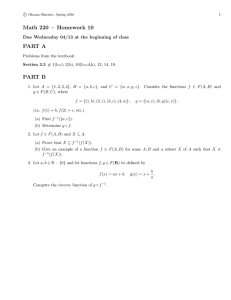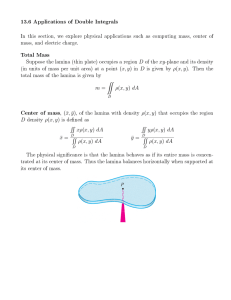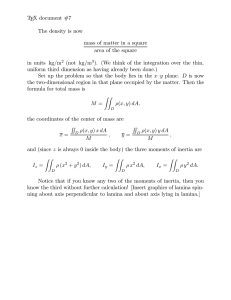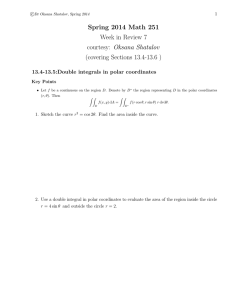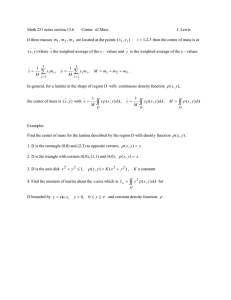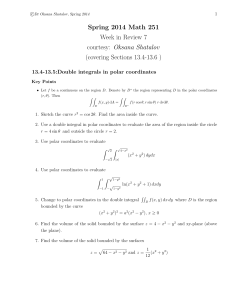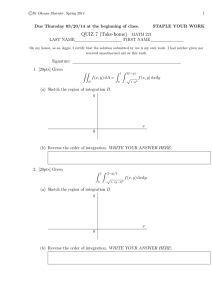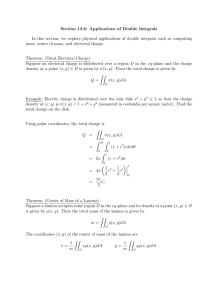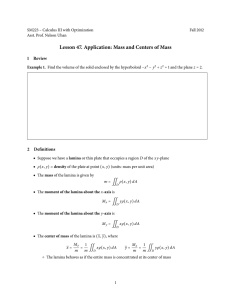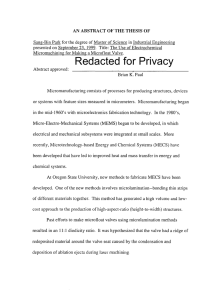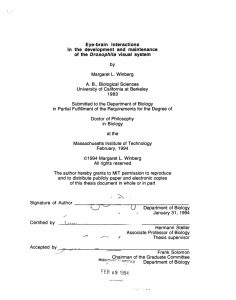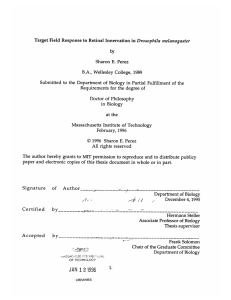Document 10582910
advertisement
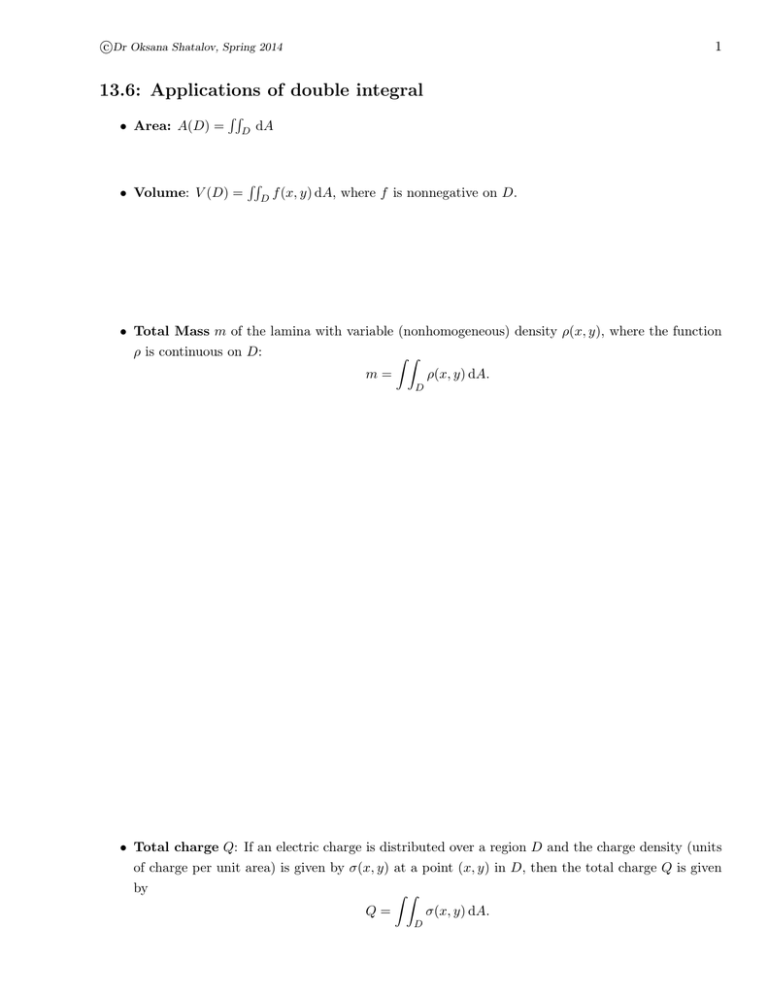
c Dr Oksana Shatalov, Spring 2014 1 13.6: Applications of double integral • Area: A(D) = RR D • Volume: V (D) = dA RR D f (x, y) dA, where f is nonnegative on D. • Total Mass m of the lamina with variable (nonhomogeneous) density ρ(x, y), where the function ρ is continuous on D: ZZ m= ρ(x, y) dA. D • Total charge Q: If an electric charge is distributed over a region D and the charge density (units of charge per unit area) is given by σ(x, y) at a point (x, y) in D, then the total charge Q is given by ZZ Q= σ(x, y) dA. D c Dr Oksana Shatalov, Spring 2014 2 EXAMPLE 1. Charge is distributed over the part of the disk x2 + y 2 ≤ 1 in the first quadrant so that the charge density at (x, y) is σ(x, y) = x2 + y 2 , measured in coulombs per square meter (C/m2 ). Find the total charge. • Moment of the lamina with variable (nonhomogeneous) density ρ(x, y) that occupies the region D about the x-axis: ZZ Mx = yρ(x, y) dA D Moment of the lamina about the y-axis: ZZ My = xρ(x, y) dA D • Center of mass , (x̄, ȳ), of the lamina with variable (nonhomogeneous) density ρ(x, y) that occupies the region D is defined so that mx̄ = My , mȳ = Mx . These yield RR x̄ = D xρ(x, y) dA , m RR ȳ = D yρ(x, y) dA , m ZZ where m = ρ(x, y) dA. D REMARK 2. The physical significance is that the lamina behaves as if its entire mass is concentrated at its center of mass. Thus, the lamina balances horizontally when supported as its center of mass. c Dr Oksana Shatalov, Spring 2014 3 EXAMPLE 3. Find the center of mass of the lamina that occupies the region D = (x, y) : x2 + y 2 ≤ a2 , x ≥ 0 if the density at any point is proportional to the square of its distance from the origin.
